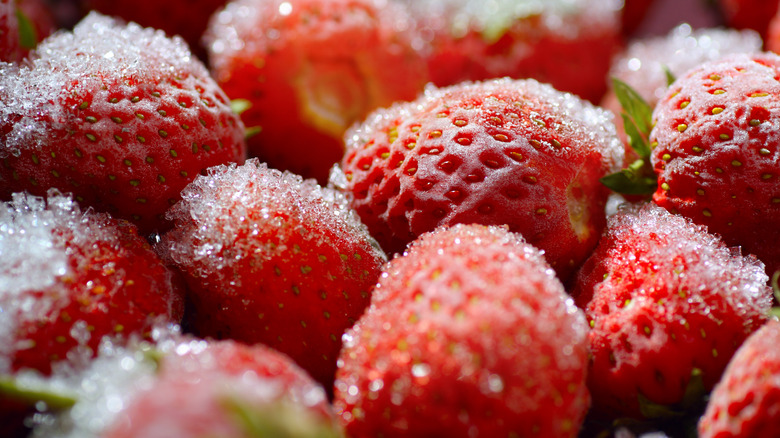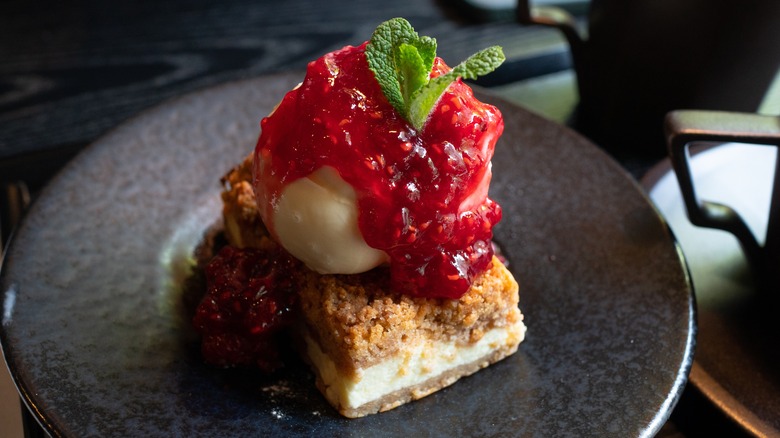The Best Way To Freeze Your Own Strawberries
Juicy fresh strawberries at the peak of their season are truly delicious. If that season feels all too fleeting, then the good news is that strawberries freeze well, making it convenient to enjoy the ruby-red fruit all year round. However, they need to be prepared in the right way to get the best results. This means flash-freezing them individually first, so they don't all freeze together in one solid, unworkable mass.
Firstly, the berries (well, technically strawberries aren't berries even though that's how they're commonly referred to) need to be gently washed under running water and thoroughly dried. Remove as much moisture as possible with dishtowels or paper towels, so they don't turn to mush. Hull the fruit, and then space them out on a parchment-lined baking sheet. Freeze them until solid (two to four hours, depending on how big your berries are), and then transfer them to resealable bags, squeezing out the air to prevent freezer burn. Frozen this way, the berries won't stick together, and you can just take out what you need.
Keep in mind that strawberries are tricky to slice once they're frozen, so think in advance about how you want to use them. If your recipe calls for them to be sliced, halved, or quartered, then it's best to cut them up after they've been washed and dried, but before you flash-freeze them. Stored correctly, the fruit will last up to a year in the freezer but will taste best within six months.
How to use frozen strawberries in drinks and desserts
Once frozen, strawberries won't have the same firm texture as fresh, so they're best either cooked or blitzed into drinks rather than just eaten post-defrost. In many cases, the berries can be used straight from the freezer. This works especially well if you're blending smoothies, milkshakes, or frozen cocktails. Or grate the frozen fruit for hassle-free shaved ice, which can be used to create delicious desserts or drinks.
Frozen strawberries also work well for cooking down into strawberry sauce, jam, or compote — simply simmer the frozen fruit with some sugar or honey and a squeeze of lemon juice for brightness. You can use a potato masher to squish the fruit down as it thaws in the pan, and just add a little cornstarch if the consistency is too thin. The mixture can top yogurt, pancakes, cheesecake, or ice cream, or use it as a filling in cakes.
You can use frozen fruit for baking into muffins and other desserts, but they might take a little longer to cook. Smaller pieces of strawberry work best, as larger ones can sink to the bottom of the batter — though you can prevent this by tossing the frozen berries in a little flour first. Alternatively, you can thaw the fruit before baking with it. Do this in the refrigerator for several hours or overnight, or use the microwave in one-minute bursts on the defrost setting if you're in a hurry.


